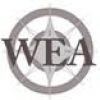The International Competitiveness of Countries: Economic-Mathematical Approach
Vol. 6, No 2, 2013
|
Ganna Kharlamova Associate professor, PhD Taras Shevchenko National University of Kyiv Department of Economic Cybernetics |
THE INTERNATIONAL COMPETITIVENESS OF COUNTRIES: ECONOMIC-MATHEMATICAL APPROACH |
|
Faculty of Economics, Ukraine E-mail: akharlamova@ukr.net
Olga Vertelieva master degree student, Volunteer for Ministry of Agrarian Policy and Food of Ukraine Department of Foreign Economic Relations Taras Shevchenko National University of Kyiv Department of Economic Cybernetics, Faculty of Economics E-mail: ole4ka-7@mail.ru |
ABSTRACT. This paper pursues three main objectives: (i) to review the existing theoretical approaches towards the phenomenon and definition of “national competitiveness” as an economic category; (ii) to analyze factors affecting the level of national competitiveness, and (iii) to define clusters of countries according to the level of their relative national competitiveness. The main focus is to identify the most appropriate definition of national competitiveness, to use a mathematical approach to test the main hypothesis (H1: there is high correlation between the competitiveness level and the list of factors that can potentially increase/decrease competitive advantages of a state). Data of Ukraine and 29 states that clustered to the same (II) stage of development according the Global Competitiveness Index 2004-2012 are taken for the research. The applied cluster analysis helped to solve the challenge of statistical research of national competitiveness as classifying of countries (data set of 36 states, 2004-2012 years) according to their competitiveness, taking into account national peculiarities. As well cluster analysis lets to test assumptions that there is an existence of some structure in the sample of countries.
|
|
Received: January, 2013 1st Revision: July, 2013 Accepted: October, 2013
DOI:10.14254/2071-789X.2013/6-2/4 |
|
|
JEL Classification: F6, F12, C5, C38 |
Keywords: competitiveness, globalization, case of Ukraine, competitive index, model. |
References
Annual reports of the Antimonopoly Committee of Ukraine for 2000-2011 years// http://www.amc.gov.ua
Antonjuk, L. (2004), Mіzhnarodnakonkurentospromozhnіst' krain: teorіjatamehanіzmrealіzacіi. Kiev: KNEU.
Doing Business 2013: Smarter Regulations for Small and Medium-Size Enterprises. Reports. // http://www.doingbusiness.org/
European competitiveness report 2003 (2003), 1299 Commission staff working document, Luxembourg, 2003.
Global Competition: The New Reality, Report of the President’s Commission on Industrial Competitiveness, Vol. 2, (Washington. D.C. i U.S. Government printing office, 1985), p. 6.
Greene, William H. (1993), Econometric Analysis, fifth edition. Prentice Hall.
Hartigan, J., A. (1975), Clustering algorithms, John Wiley & Sons, Inc.
Hastie, T.; Tibshirani, Ro. and Friedman, J. (2009), 14.3.12 Hierarchical clustering. The Elements of Statistical Learning (2nd ed.). New York: Springer.
Kharlamova, G. (2011), Competitiveness of Ukraine as a derivative of state investment dynamic rate, Ekonomika ta derzhava, No.7, pp. 17-21.
Kharlamova, G. (2013), Investment security of Ukraine: dynamics and forecast, The problems of Economy, No.1, pp. 363-367.
Krugman, P. (1995), Growing World Trade: Causes and consequences, Brookings Papers on Economic Activity, рр. 327-377.
Kulikov, G. (2000), Japonskij menedzhment i teorija mezhdunarodnoj konkurentosposobnosti. Moscow: Ekonomika.
Lagutіn, V. (2011), Konkurentospromozhnіst' nacіonal'noi ekonomіki. Kiev: KNTEU.
Official website of State Statistics Committee of Ukraine: http://www.ukrstat.gov.ua/
Porter, M.E. (1998), Stretegіja konkurencії. Metodika analіzu galuzej і dіjal'nostі konkurentіv (per. z angl. A. Olіjnik, R. Sіl's'kij), K.: Osnovi.
Porter, M., Sachs, J. and Warner, A. (2000), Executive Summary: Current Competitiveness and Growth Competitiveness, The Global Competitiveness Report 2000, Oxford: Oxford University Press.
Rapkin, D., Avery, W. and Colo, B. (1995), National competitiveness in a global economy, Lynne Rienner Publishers.
The Global Competitiveness Report 2011-2012 // http://www.weforum.org/reports/global-competitiveness-report-2011-2012
Shevchenko, O. (2011), Modelі pіdvishhennja mіzhnarodnoї konkurentospromozhnostі kraїni: teoretiko-metodologіchnij aspekt, Ekonomіchnij vіsnik Donbasu, No. 3, pp. 57-60.
Shvidanenko, O. (2007), Global'na konkurentospromozhnіst': teoretichnі ta prikladnі aspekti, K.: KNEU.
World Competitiveness Yearbook 2000, IMD // www.imd.ch/wcy/ranking













